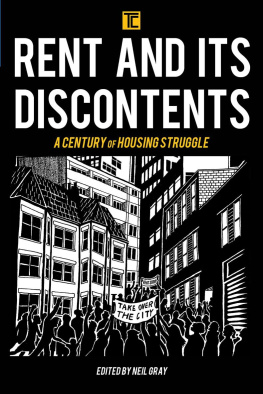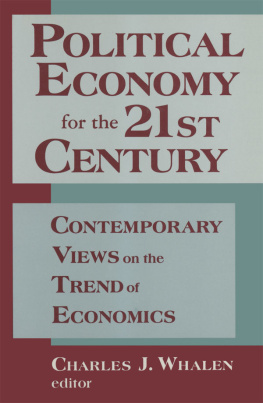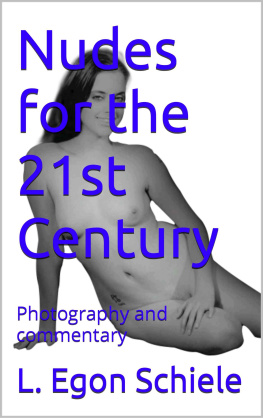Published by
UCL Jill Dando Institute of Crime Science
University College London
Brook House
216 Torrington Place
London WC1E 7HN
With Routledge, 2 Park Square,
Milton Park, Abingdon, Oxon Ox14 4RN
711 Third Avenue, New York, NY 10017
Routledge is an imprint of Taylor & Francis Group, an informa business
Barry Poyner 2006
All rights reserved; no part of this publication may be reproduced, stored in a retrieval system, or transmitted in any form or by any means, electronic, mechanical, photocopying, recording or otherwise, without the prior written permission of the Publishers or a licence permitting copying in the UK issued by the Copyright Licensing Agency Ltd, 90 Tottenham Court Road, London, W1T 4LP
First published 2006
ISBN 0-9545607-3-6
ISBN 978-0-954-56073-7
British Library Cataloguing-in-Publication Data
A catalogue record for this book is available from the British Library
Project management by Deer Park Productions
Design and typeset by Pantek Arts Ltd
Academics are forever being exhorted to undertake cross-disciplinary work, but they often meet with indifference or suspicion when they try to do so. Most of them soon give up the struggle to gain cooperation or access to the resources they need, and retreat back to the safety of their own disciplines. This makes it all the more remarkable that for the past twenty-five years Barry Poyner, a trained architect, has been engaged on a programme of criminological research on the relationship between crime and the built environment. That he has done this successfully as a private consultant, without any institutional backing, is evidence of his considerable determination.

He brings a unique perspective to this under-researched field. His background in architecture has given him a detailed understanding of the everyday ways in which people use buildings, and of the ways in which small changes in design can affect this usage. Without this understanding, he could never have produced the detailed guidelines for designing out opportunities for crime that he lays out in this and earlier books. His training has also taught him how to communicate the essence of these guidelines in illustrations sketches he has drawn or photographs he has taken himself. But his training did not teach him that good design could prevent crime. In fact, this idea was close to heresy, dismissed as architectural determinism by leading architects and criminologists of the day. Instead, he came to the idea as a result of a study of accidental drownings that he completed at the beginning of the 1980s. When he plotted the drowning locations, he found that these were concentrated in places with the greatest opportunity for them to occur. For example, people drowned in canals that were in towns and cities, not way out in the country where few people ever went. He concluded that in order to obtain the maximum benefit from preventive measures such as fences, warning notices and lifebelt stands these should be focused on the urban not the country canals. Coincidentally, he noted that road safety engineers had discovered that many crashes occurred at roundabouts serving as terminals for motorways and, in order to prevent these crashes, had designed a new kind of junction to connect motorways with existing roads. With this background of experience, he was open to Oscar Newmans ideas, then just beginning to cross the Atlantic, about the need for defensible space designs to reduce crime in public housing.
Newmans ideas greatly influenced social housing policy, but they were panned by social scientists, most of whom thought he had disregarded the social causes of crime. He had played into their hands by making numerous methodological errors in his research, which was hardly surprising since he had been trained as an architect not as a social scientist. Barry Poyner does not make these mistakes. Though he may have been trained as an architect, he is by instinct a social scientist. His research is unusually meticulous and its conclusions never go beyond the evidence. Its particular hallmark, however, is a focus on specific forms of crime. To obtain data on these specific crime types he and his colleagues most notably Barry Webb have often had to sift laboriously through hundreds of police crime reports to sort them into more specific categories. For example, when commissioned to study street attacks in Birmingham and Coventry, he sorted these into several distinct sets of incidents such as handbag snatches, robberies of drunks and pick-pocketing at bus queues each of which depended for their occurrence on clearly defined situational conditions that provided the opportunity for them to occur. These findings gave him the raw material to think about ways in which to change the environmental conditions giving rise to each set of incidents. For example, he proposed different ticketing and queuing systems for buses which would remove the opportunities for pickpocketing.
He has consistently shown in his work that small changes in design or layout can critically affect opportunities for crime, but that such changes have to be made separately for each type of crime. For example, in this book, which is an updated and much revised version of Crime Free Housing that he published with Barry Webb in 1991, he shows that the features that protect cars from being stolen when parked at home are not identical to those that protect the house from burglars. But he goes even further and shows, for example, that design features that deter burglars who want to steal large and bulky items such as TVs might not deter burglars who are satisfied with easily carried items such as cash or jewellery. This is because burglars need a car to transport the former items but not the latter. Certain housing layout and design features can facilitate nearby parking and thus unwittingly help burglars to steal larger items, whereas other features can make such parking difficult or risky for burglars. This degree of specificity is highly unusual in criminological research, but it is absolutely critical if the research is to result in practical crime prevention action.
In fact, it is his determination to make research relevant to practice that drives Barry Poyners work and gives it the edge of quality. He has never been interested in merely elucidating the relationship between design and crime. Much more important to him has been to ensure that crime prevention design, founded on a solid base of research evidence, becomes an integral part of architectural practice. His ultimate goal is to ensure that architecture plays its proper role in driving down crime. That is why his guidelines are so tangible and practical. It is also why he is a crime scientist and why the Jill Dando Institute of Crime Science is pleased to publish this book.
Ronald V. Clarke
University Professor, Rutgers, The State University of New Jersey
Visiting Professor (20012005), Jill Dando Institute of Crime Science
In 1983, I walked my first beat, a crime-ridden and disorderly council estate. Despite numerous arrests, the estate seemed to be dominated by criminals and a small number of individuals whose main source of pleasure seemed to be making life as unpleasant as possible for their neighbours. As a former engineer, I was genuinely shocked at the incredible ease with which so much crime was committed. Houses and cars seemed to have been designed for the convenience of criminals. The housing layout removed any influence and control away from residents. Large grassed areas, lacking any ownership or relationship to peoples homes, were abandoned by the law-abiding and had become disfigured eyesores. A network of footpaths and alleyways gave easy access to the rear of houses and helped criminals to wander around the area, searching for vulnerable targets, offending and escaping.











